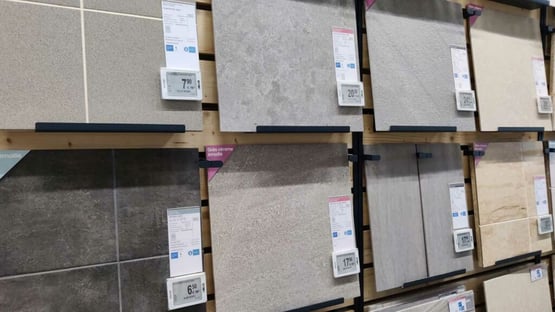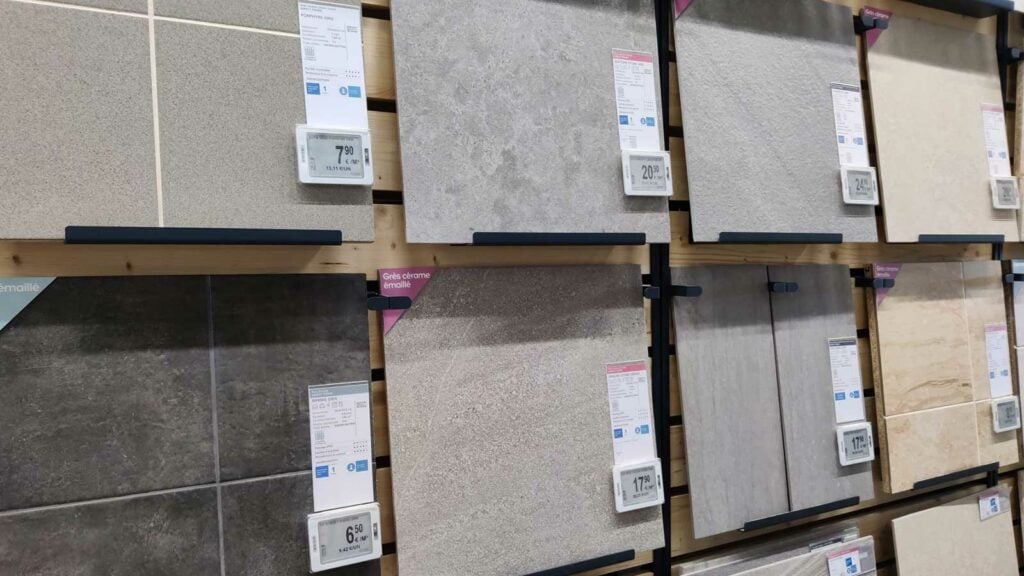Why do it yourself?

As evidence emerges of the DIY boom now starting to fall back, retailers will have to work even harder to communicate their offer to customers.
While sales for most DIY chains are still ahead of pre-pandemic levels as consumers continue to prioritise fixing and decorating their homes, the media is reporting a slight cooling in demand, due primarily to the effects of the cost-of-living crisis. Higher interest rates are leading to higher mortgage payments and this is expected to affect the rate at which people move home, and thus invest in DIY and décor.
New stamp duty rates announced in the recent Government Fiscal Event may stimulate some demand, but it is expected to be short-lived as the cost-of-living crisis lingers.
Therefore, most of the DIY chains have accepted that profits will now be lower, exacerbated by the need to offer lower prices on some items in order to keep stock moving. However, it will take more than price cuts to attract customers in a market that has become even more competitive through both store chains and online channels.
All retailers will have to get even sharper on inventory management, replenishment, and their response to anomalies such as shelf gaps, price management and sales support.
The scale of the problem facing retailers in improving in all these areas is revealed in original research by Pricer into retailers’ operational pain points. Polling over 100 UK retailers, its research showed three in ten (29%) of retailers said shelf gaps were a problem, as was getting the right stock into store from the Distribution Centre (DC) or warehouse.
26% said being able to restock shelves in a timely manner was an issue, while 24% said product availability due to not being able to see what stock was available in real-time proved a problem.
The impact of these problems comes into stark view at the shelf. 52% of retailers say up to 20% of their inventory is unavailable at any given time, 25% said anywhere between 26- 50% of stock was unavailable at any given time, and 18% of retailers said this was true for over 50% of their inventory.
On top of these operational challenges comes further pressures in the form of customer preferences. A further research study by Pricer shows just how demanding the customer has become, the more so since lockdown when they had time to focus on home projects, improving their DIY skills, their product knowledge and their awareness of where the buy and at what price.
Over 60% of respondents agreed that they were more likely to buy a product when they could easily and clearly see information about that product displayed, while 54% said they wanted more information other than price. They went on to say what sort of information they were looking for; 53% said they’d like to see more information about product sourcing, while 52% wanted to see more information about a product’s sustainability credentials.
This information also had to be consistent across channels as 51% said that they had been frustrated when the information received about a product at the shelf edge was inconsistent with the detail about the same product available on the retailer’s website.
Too little information can be as bad as too much; 39% said that they had become overwhelmed with too much information that it had caused them to give up on their purchase all together. 49% said that they had been put off buying a high consideration or complex item because there hadn’t been enough information.

Clearly, the shelf has a lot of work to do given how dependent consumers are on it to help them decide. In DIY, this is about electronic labels as well as digital signage, which combined in the right way can service the everyday needs of consumers but also help them with more considered, expensive products.
Digital signage can also breathe new life into promotions that can tend to get a bit lost if they are not supporting the customer journey. 52% of survey respondents said they’d like to see more digital signage and information at the shelf edge to help them make purchasing decisions.
Digital signage may also extend to kiosks that help the customer find what they want, using rich media to demonstrate the product, and then link to flash technology that identifies it on the shelf. Flash can also be integrated for on line, so the customer chooses the item they want at home or the office, and then picks up in store at the flash location.
The shelf also has a job to do for staff when it comes to picking for on line orders. With increasing confidence, supported by Web 2.0 capability that seeks to emulate as far as possible the in store experience, and demand driven necessarily by the Covid pandemic, consumers are buying more and more DIY online.
LED Flash technology built into all electronic labels instantly identifies pick items and is so quick that staff can achieve a pick rate of as high as 100 against an average for slow-response Wi-Fi-based systems of 30 items or fewer.
More recently, the status of the shelf can be monitored by cameras that can spot shelf gaps, misplaced items and link directly to the category planogram for compliance. These and all other shelf capabilities are now managed in the Cloud, ensuring that they are integrated to give an accurate, consistent and immediate view.
Further labour is saved because staff are no longer needed to constantly check the shelves, leaving them free to serve customers, which remains the holy grail for DIY retailers that seek to differentiate on service and experience.
These technologies, integrated in the Cloud, go way beyond simple improvements in efficiency; this is about reducing labour costs in a high wage, employee shortage environment and providing a better service than the competition with the attendant higher sales.
This interview with Duncan Potter, CMO at Pricer, was originally published in DIY Week in November 12, 2022.